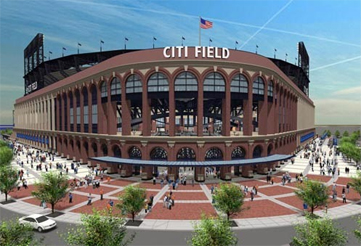Trending
Welcome to the Mets’ new home

Two weeks ago I wrote about the new Yankee Stadium, and as far as I am concerned, the team could paint its outer walls the most tasteful colors, but it wouldn’t be enough for me, because I favor the Mets. So, a certain proprietary urgency kicks in as I consider the Mets’ new stadium, Citi Field, which dares to replace the much-maligned and already much-missed Shea Stadium.
There is a petition circulating on the Internet to paint the walls of the new stadium blue to foster a sense of continuity with the old stadium. That is probably a lousy idea. But at the pre-rational level of pure sentiment, it almost makes sense.
The new Citi Field was designed by Populous, formerly HOK Sport Venue Event, a 25-year-old architectural firm that specializes in stadiums like the Yankees’ new home. Like the new Yankee Stadium, Citi Field is conceived in a retro-style. But there are differences.
Whereas the new Yankee Stadium evokes the august and sober traditions of American classical architecture as practiced in the 1920s and 1930s, Citi Field looks further back to the very earliest days of the 20th century, especially to places like Ebbets Field, home of the Brooklyn Dodgers.
The façade of Citi Field is dominated by a powerful arcade of giant order arches on the second level overpowering a more modest arcade at the ground level. As at the old Ebbets Field, glazed arcades alternate with passages in which masonry is more prominent. But because Citi Field is, after all, a post-modern and post-industrial stadium, the architects have slyly intimated that all the supports implicit in arches and masonry are just a ruse, and the abundance of open glass that leads into the garishly adequate Jackie Robinson Rotunda indicates just that.
With 42,000 seats, Citi Field is far more exclusive than Shea, which had 57,000 seats, and the seats at the new stadium have a crucial six additional inches of legroom. Likewise, there are almost three times as many elevators, twice as many restaurants whose combined capacity is six times greater than in Shea, as well as more luxury suites, more toilets and a concourse that is twice as wide as its predecessor.
Put all of that together and Citi Field represents the expression in brick and mortar, as it were, of the shift in spectator sports from a popular, even working-class source of entertainment, to something that belongs almost entirely to the middle-class.

James Gardner, formerly the architecture critic of the New York Sun, writes on the visual arts for several publications.




